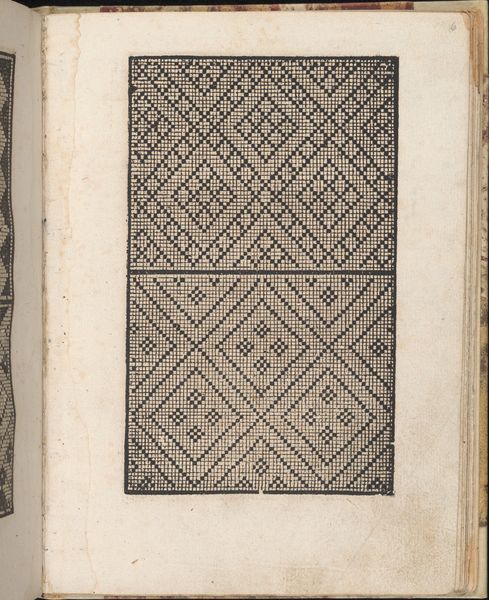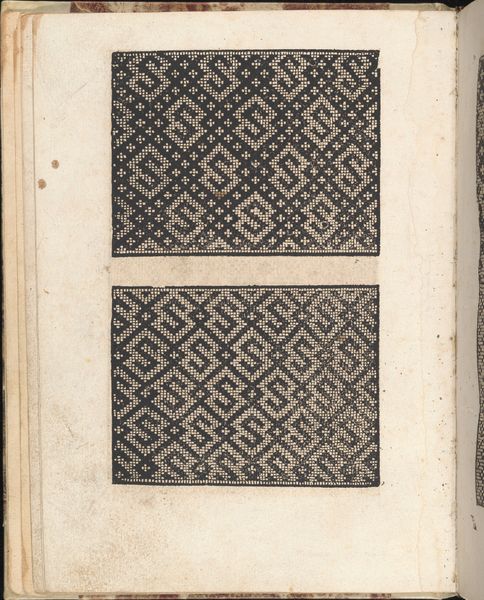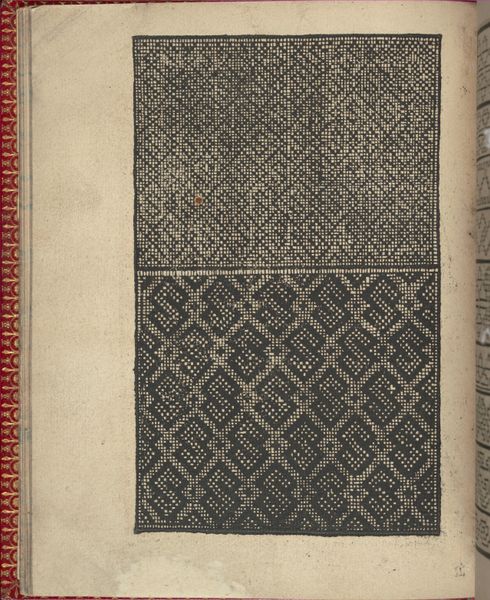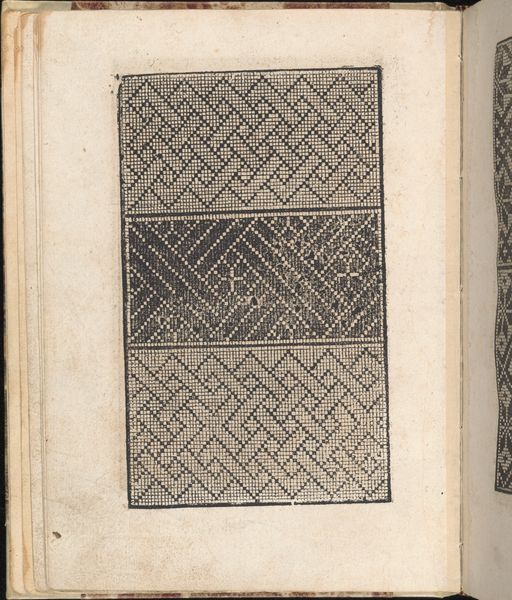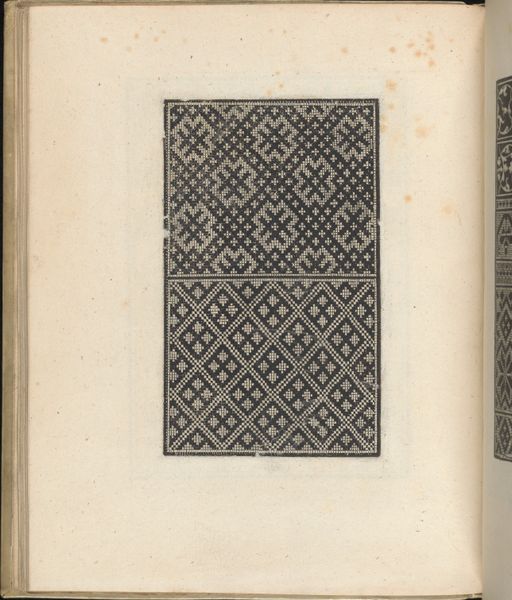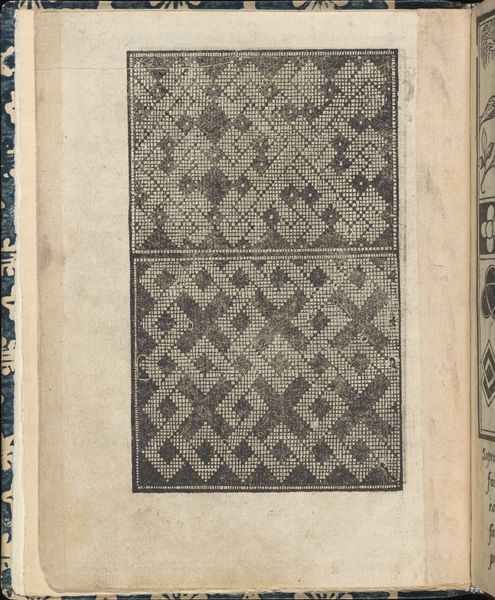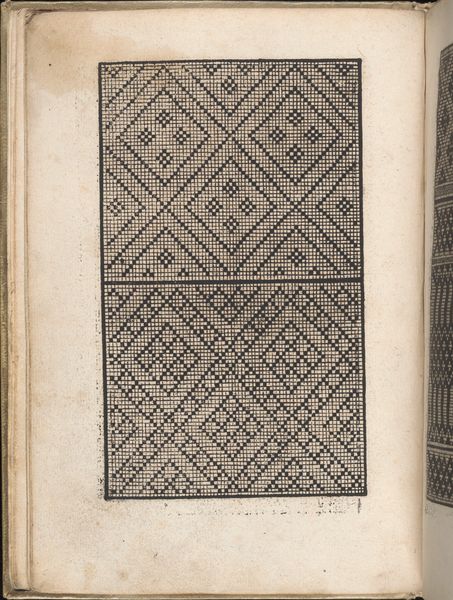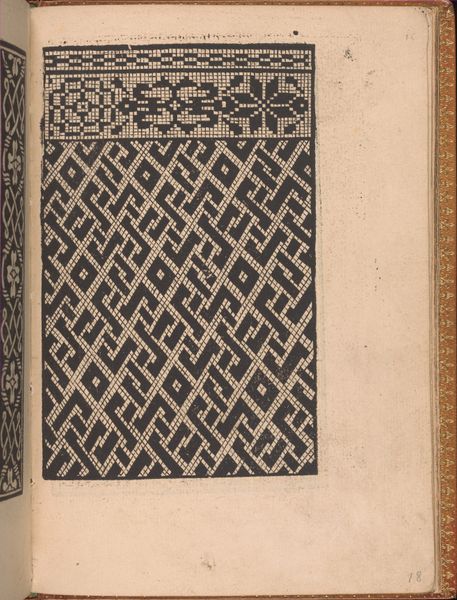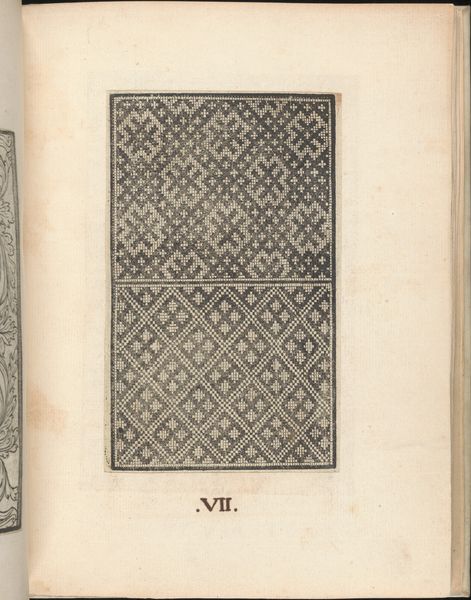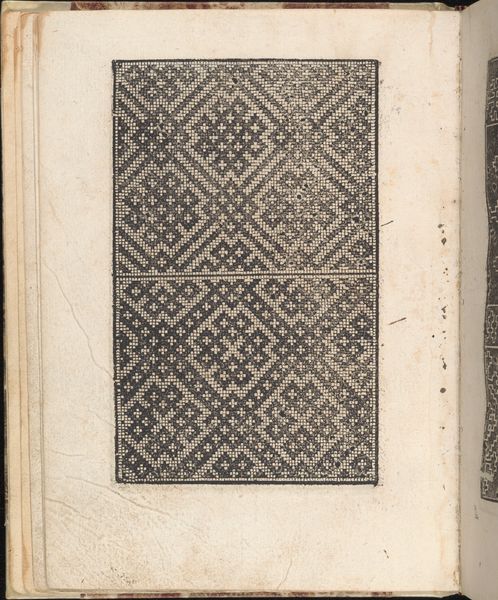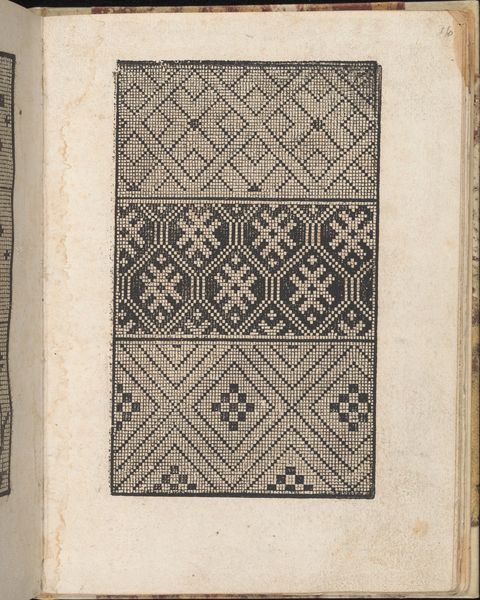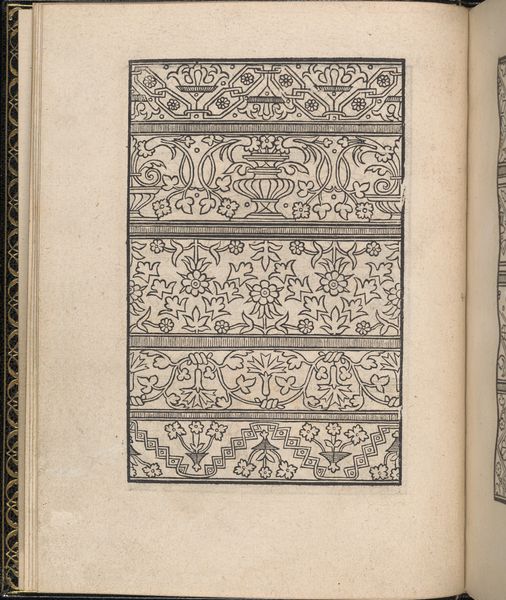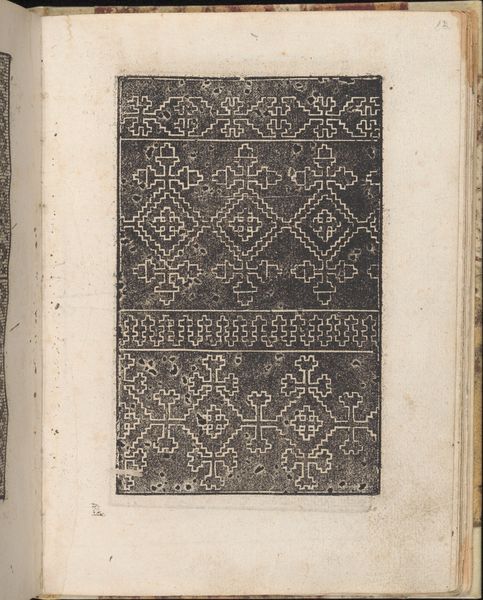
Ein new getruckt model Büchli...Page 4, verso 1529
0:00
0:00
ornament, print, woodcut
#
aged paper
#
ornament
#
toned paper
#
medieval
# print
#
book
#
coloured pencil
#
geometric
#
woodcut
#
monochrome
Dimensions: Overall: 7 7/8 x 6 1/8 in. (20 x 15.5 cm)
Copyright: Public Domain
Editor: Here we have a page from "Ein new getruckt model Büchli...", created in 1529 by Johann Schönsperger the Younger. It seems to be a woodcut print of geometric patterns on aged paper. There's something meditative about the repetition, but also almost dizzying. What do you see in this piece, especially in its historical context? Curator: What strikes me immediately is the dual nature of the ornament. Notice how the upper and lower registers employ similar geometric foundations, yet achieve drastically different visual textures. It makes me consider what these repeating symbols communicated to their original audience. Were they merely decorative, or did these patterns carry deeper meaning connected to societal values or perhaps even spiritual beliefs? Think about how crucial pattern and symbol were to conveying identity during that period. Editor: That's interesting! I hadn't considered a spiritual element. It does seem almost like a visual language, especially given that it’s a printed book. It feels like it could almost be an early form of data encoding in a way. Curator: Precisely! These weren't just idle doodles. Imagine the cultural memory embedded in these motifs! Consider the transmission of knowledge; how these visual languages helped bind communities across generations. What psychological impact might these familiar forms have had on people living in the 16th century? Did the consistent replication of specific design elements function almost like a kind of social reassurance, providing a sense of continuity in a world that was rapidly changing? Editor: So the value might not just be aesthetic but also cultural and even psychological…a way to connect to the past and find stability? I’ll definitely look at patterns differently now. Curator: Exactly. Visual symbols echo through time. I’m going to look for how this symbolism repeats within this artist's other prints and throughout the printed works of that era. It’s a whole field of inquiry, and you've already taken the first steps.
Comments
No comments
Be the first to comment and join the conversation on the ultimate creative platform.

